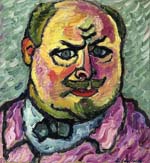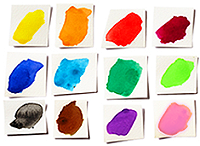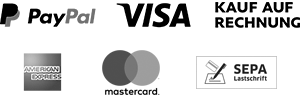Alexej von Jawlensky (in Extreme landscape)
.. alternativ show all Alexej von Jawlensky images unfiltered
Alexej Jawlensky born 13.3.1864 in Torschok/Turer (Russia) - died 15.3.1941 in Wiesbaden
"For the first time I understood how to paint, not what I see, but what I feel." (1907)
The Russian painter Jawlensky was one of the most important representatives of the avant-garde in Germany. After studying at the Academy of Fine Arts in St. Petersburg, he came together with the painter Marianne von Werefkin, to Munich in 1896. In 1909 Jawlensky founded with Münter and Kandinsky, with whom he
lifelong friendship connected the "Neue Künstlervereinigung" in Munich. After his first trips to Brittany in 1905 and 1907, he created portraits as well as landscapes. In 1905 10 of his works were exhibited at the "Paris Autumn Salon". Matisse's Neo-Impressionist works, which were also shown there, made a lasting impression and inspired Jawlensky.
In 1912 Jawlensky left the "Neue Künstlervereinigung", got to know Klee and Nolde and, supported by Kandinsky, contacted the artist group "Der Blaue Reiter". In the same year he exhibited paintings there in the Berlin "Sturm" gallery.
At the outbreak of the First World War, the painter left Germany and lived from 1914-1921 in Switzerland, then in Wiesbaden. Here, in 1924, together with his friends and fellow painters Kandinsky, Feininger and Klee, he founded "The Blue Four", one of the most important artistic groups of classical modernism and international avant-garde art of the 20s and 30s of the 20th century, which surprisingly remained strangely unknown in Europe.
Jawlensky's art was initially influenced by the Fauves, especially Matisse. He preferred strong and bold colors and achieved with them a particularly intense expressiveness, reminiscent of Russian folk art and icon painting. Under Gauguin's influence, the colour palette and the rhythmic structure of his portraits were simplified, the dark contours were striking. In form, Jawlensky now became more monumental and he showed a clear turn to the abstract.
In 1933, Jawlensky's art was defamed as "degenerate". In 1935 he painted his last "abstract heads", two years later also his last
Meditations and Still Lifes.
Text © Jürgen Banse, 2014






